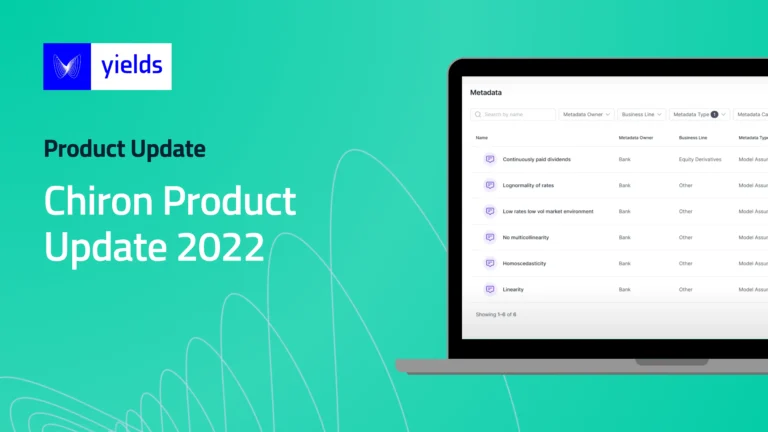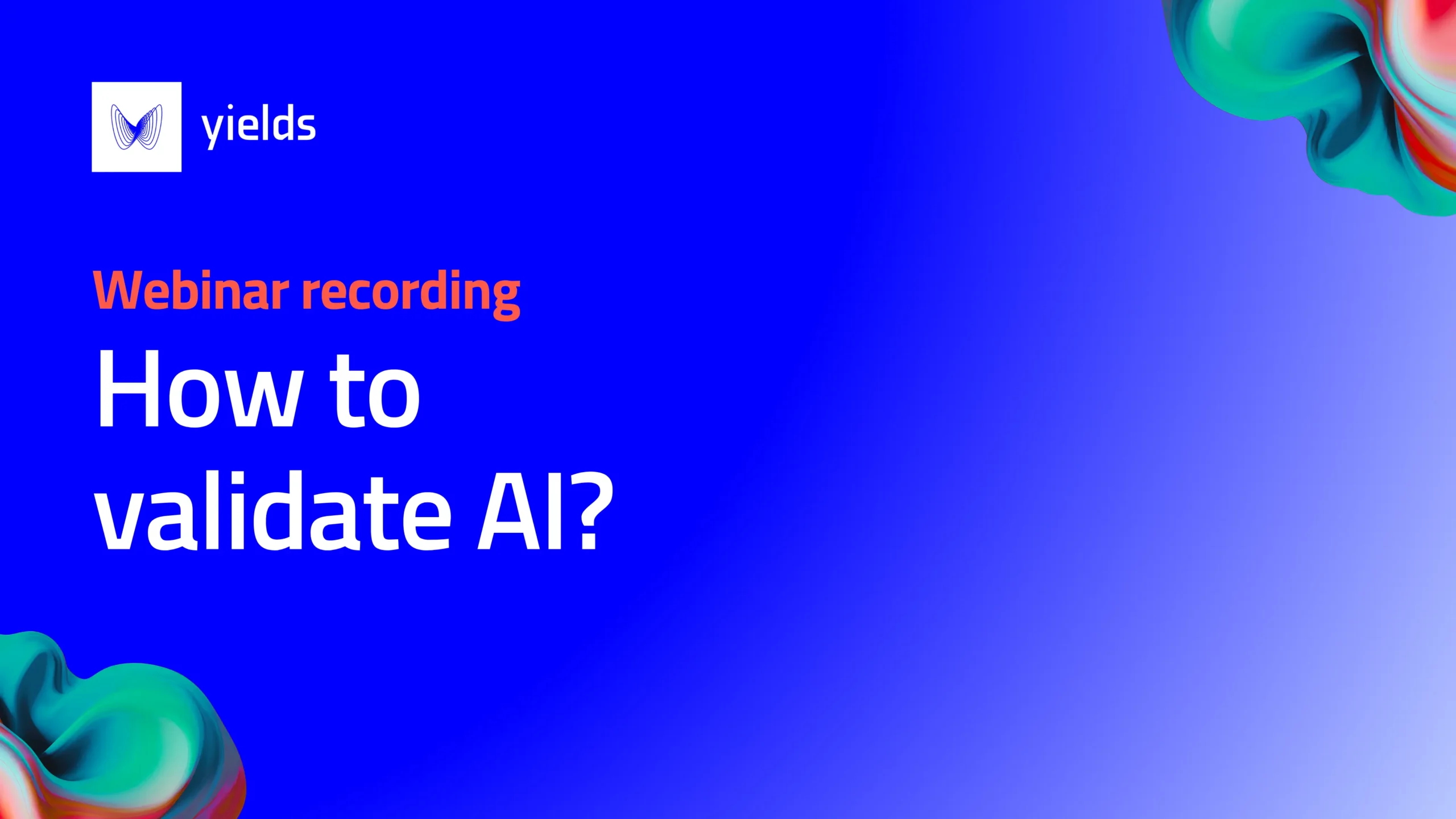At Yields.io, we are dedicated to ensuring that our product is continuously improved to provide the best user experience possible. Our goal is to help our clients experience the full potential of Chiron in streamlining the execution of model risk management activities, allowing them to manage model risk with more efficiency and ease.
Our product enhancement process is based on an agile methodology, which allows us to deliver frequent updates that provide significant value. By incorporating client feedback into our development process, we ensure that our product is tailored to meet specific and evolving needs. We take a holistic approach, considering four main dimensions:
- Collaboration and user experience
- Reproducibility and auditability
- Re-usability and scalability
- Immediate access
In this article, we would like to share some of the key improvements we implemented over the course of 2022. These enhancements were made with the goal of providing tangible benefits in each of the dimensions we consider integral to be able to streamline and scale your MRM activities.
What’s new?
Collaboration and user experience
Chiron was developed to seamlessly facilitate efficient collaboration between teams by breaking down technology silos and centralizing all processes across the model lifecycle in one platform. Collaboration between different lines of defense and team members is pivotal for this to be achieved. Additionally, providing stakeholders with user-friendly tools that allow them to intuitively perform their activities can increase overall satisfaction and improve efficiency.
In 2022, we implemented several updates to our platform to enhance collaboration and improve user experience
Chiron App now allows for more organized sharing of objects among users so that they can be immediately used within a clear context.
For example, when a model developer needs to share an object such as a Specification – a Jupyter Notebook template with a series of tests to be run for a model type – with a model validator, the folder containing the specification is shared, while all other objects within the folder remain private and visible only to the developer.
We have also improved the dashboard feature in Chiron Enterprise. The updated version enables you to create dynamic dashboards where you can apply filters and view customized aggregate data on demand. This feature allows you to quickly create aggregated model risk-related views and select preferred cut-for-business presentations, while also supporting management decisions. The dashboards are preconfigured and available for four key objects: models, processes, findings, and tasks.
Reproducibility and auditability
With constantly evolving models, it is essential to track model changes to understand their impact and investigate any differences over time. A platform like Chiron allows users to identify links between objects such as data and testing scripts, enabling the reproduction of analysis results. For example, during a model re-validation, validators can compare and contrast the latest testing outcomes with previous validation results to confirm the model’s fit-for-purpose assessment. In addition, it is often required to evidence changes as well as decisions made over time for auditability purposes, and Chiron is the platform to make this happen, making it a robust platform to meet the needs of effective model risk management.
Chiron App now enables users to more easily track changes by allowing them to register a business version of a Specification within the user interface. This makes it clear to all users which version of the specification is being used in a given analysis. Versions are registered with a sequential number, offering you a clearer view of the changes that have been made over time. The links between data and scripts also remain visible to all users within the user interface at the Instance level, i.e. in a Specification that can be run with the selected data, providing a comprehensive understanding of which Specification is being run with which data.
We have also added a similar feature in Chiron Enterprise where various objects, including their configurations, are historicized. For example, the settings for a workflow structure configuration are versioned and an Admin or Power user can determine the point in time when a specific version became applicable. The historicization feature allows users to easily identify changes that have been made to different objects in the platform, including who made the changes and when.
Re-usability and scalability
Model developers and validators often work independently in silos, meaning that good work is frequently redone, unnecessarily, and that best practices and standards are not disseminated across the model risk organization. To address this issue, we have made Chiron more flexible to suit business-specific needs. Chiron allows for the organization and standardization of work across model types and teams, thus promoting cross-pollination of ideas, better collaboration, and optimal exploitation of the skills and expertise of the team members and individuals.
One of the key benefits of Chiron App is its ability to facilitate efficiency gains by enabling users to leverage previous analyses. To support this principle, model developers can now create a copy of an existing Specification and add parameters to it, allowing them to modify the structure of the Specification and adapt it to a new analysis while preserving part of the original content as needed.
To illustrate this, a model validator can extend an original analysis by adding independent testing without having to recode building blocks, such as an interpolation function. This makes the previous work reusable and extendable, and means the time and effort spent on it is not squandered.
In Chiron Enterprise, Administrators and Power users can now configure dedicated templates at the organizational level to ensure consistency and capture information for issues (findings) and model usage (use cases). This ensures that all users across the board capture the same information in a standardized manner, as required.
For example, for model findings, mandatory fields such as ‘Issue Category’ and ‘Issue Severity’ can be set to facilitate grouping of information and prioritization of actions accordingly.
Immediate access
Model risk stakeholders often look for platforms that offer ready-to-use functionalities and analytics to save the time and resources required to develop in-house infrastructure. In response to this, we are constantly adding new functionalities and analytics in Chiron to allow you to use our platform from the day of implementation.
In the last quarter of 2022 we added two main important features in Chiron App and Chiron Enterprise to support stakeholders in establishing robust model risk management practices:
- Chiron App users can now benefit from additional out-of-the-box model risk analytics. In particular, the Explainable AI and the Data Quality Assessment analyses have been added and can be downloaded directly from the in-platform user guide for immediate use. These come with user instructions on how to run the analysis as well as sample data (csv files) for users to immediately appreciate its value.
- A unique feature we implemented in Chiron Enterprise is a Documentation Builder module. With it, you can generate model documentation by selecting qualitative content as well as the relevant test results in an effortless manner, while ensuring high-quality deliverables. The module supports both Word and Latex formats, and for the latter, it offers a full integration with Cocalc, which enables users to compile Latex syntax in real time within the platform itself and generate pdf files that can be previewed directly.
To read more about Chiron’s model documentation builder, please click here. To see it in action, request a demo here.




